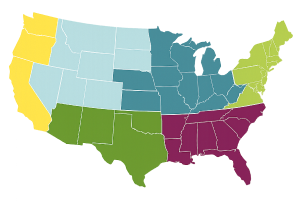
How do we use your location?
Knowing your location helps us recommend plants that will thrive in your climate, based on your Growing Zone.
Our No Mow Lawn & Microclover Seed Mix is the perfect solution for a self-sustaining lawn. The lawn features our No Mow Grass, a mix of low-growing grasses that are soft and highly resilient. Microclover has been gaining popularity around the world as a natural solution for healthy, low-maintenance lawns. This durable, easy-to-grow mix is a great option for high traffic areas like home lawns, athletic fields, parks, and even slopes. It will grow in full sun to partial shade. It thrives in light to moderate shade, including under trees with indirect light. It can also tolerate growing under black walnut trees and spruce trees, if the walnuts and pine needles are removed. This quick-growing lawn will germinate in about 10-14 days when the conditions are right; the cool season grasses establish best in spring or fall. This mix is best for use in the Northeast, Mid Atlantic, Midwest, and Pacific Northwest. For states along the southern US border and warmer zones, we recommend warm season grasses.
As soon as your order is placed you will receive a confirmation email. You will receive a second email the day your order ships telling you how it has been sent. Depending upon your order date, we may hold your shipment to combine it with other products on your order, if applicable. See our shipping information page for approximate ship dates and more detailed information. If you have any questions, please call Customer Service toll-free at (802) 227-7200 or contact us by email or chat.